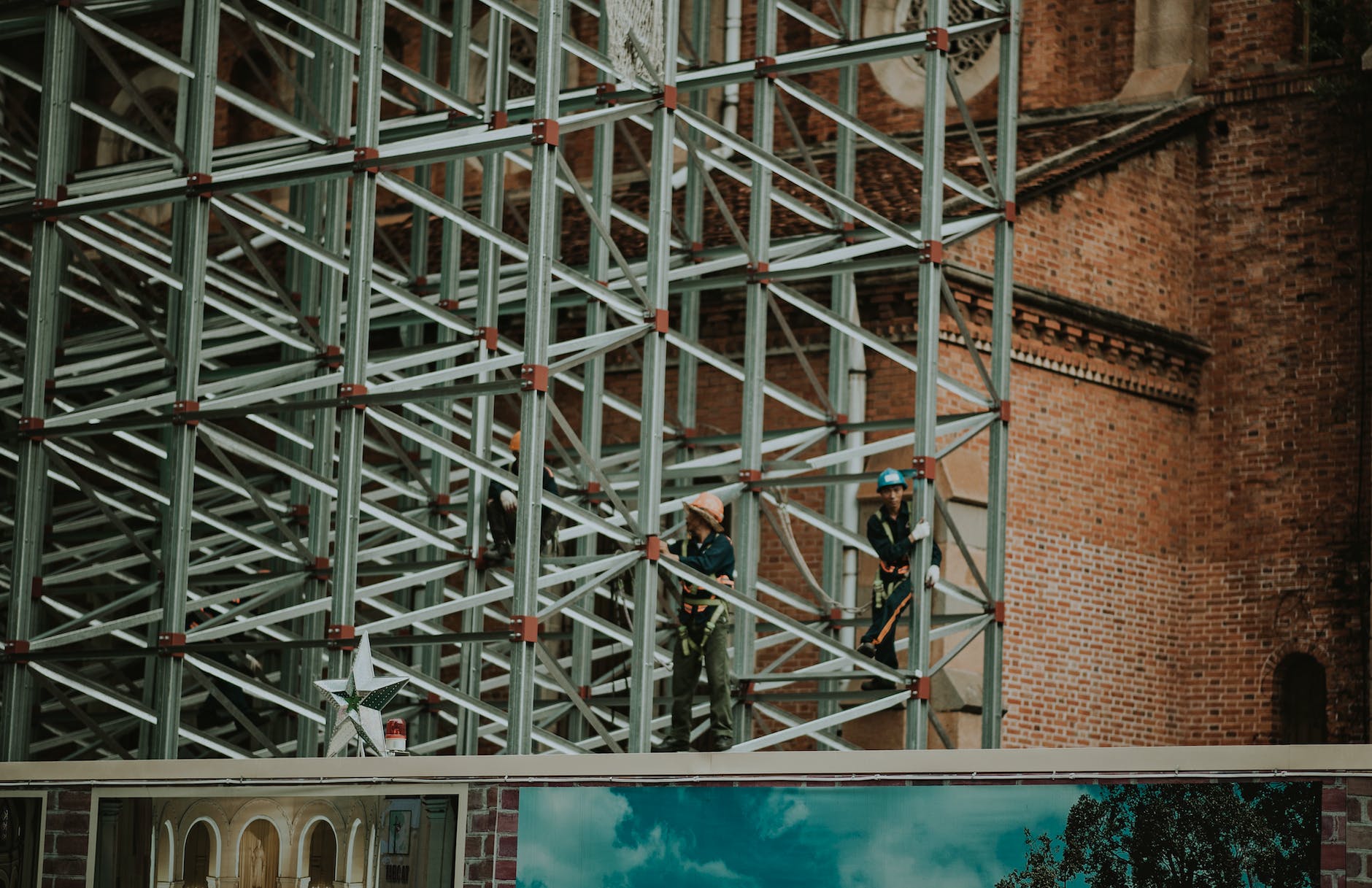
The Basics of Scaffolding
Scaffolding plays a vital role in construction and various industries where temporary structures are needed to support workers and materials at elevated heights. This article will delve into the fundamental aspects of scaffolding, from its types and components to its importance, safety measures, and usage.
Introduction
The Basics of Scaffolding : Scaffolding, also known as staging or scaffold, is a temporary structure used in construction and maintenance projects to provide a safe and elevated work platform. It offers workers easy access to hard-to-reach areas and ensures their safety while working at heights.
Types of Scaffolding
Single Scaffolding
Single scaffolding, also referred to as bricklayer’s scaffolding, is commonly used for brickwork and consists of a single row of vertical standards placed parallel to the wall. Ledgers and transoms support the standards, creating a stable platform for workers.
Double Scaffolding
Double scaffolding, or mason’s scaffolding, is employed when single scaffolding isn’t strong enough to support heavy loads. It consists of two rows of standards with a gap between them, allowing workers to reach greater heights without compromising stability.
Suspended Scaffolding
Suspended scaffolding involves hanging platforms from the top of a structure using ropes or chains. This type is ideal for projects where ground support is impractical, such as painting the exterior of tall buildings.
Cantilever Scaffolding
Cantilever scaffolding is built from a series of needles or horizontal projections that are supported by the structure itself or specially designed supports. This type is useful when the ground near the structure is uneven or obstructed.
Components of Scaffolding
Scaffolding consists of several key components that work together to create a safe and sturdy platform:
Standards
Standards are vertical tubes that form the main framework of the scaffolding. They provide the vertical support and stability necessary for the structure.
Ledgers
Ledgers are horizontal tubes that connect the standards and help distribute the load evenly across the scaffold. They play a crucial role in maintaining the stability of the platform.
Transoms
Transoms are horizontal or diagonal members that are placed at right angles to the ledgers. They further strengthen the scaffolding and provide additional support.
Base Plates
Base plates are placed at the bottom of the standards to provide stability and distribute the load over a larger area. They prevent the scaffolding from sinking into the ground.
Importance of Scaffolding
Scaffolding is essential for various reasons:
- It provides a safe working platform for construction and maintenance tasks.
- It allows workers to reach elevated areas with ease.
- Scaffolding ensures better visibility and access to the work area.
- It enhances worker efficiency and productivity.
Safety Measures
Safety is paramount when working with scaffolding:
- Proper training is crucial for all workers using scaffolding.
- Regular inspection helps identify and rectify potential hazards.
- Fall protection mechanisms, such as guardrails and harnesses, must be in place.
- Weight limitations of the scaffolding should never be exceeded.
Usage of Scaffolding
Scaffolding finds its applications in different industries:
- In the construction industry, it facilitates various stages of building construction.
- Maintenance and repair work benefit from the convenience and safety scaffolding offers.
- Painting and renovation projects are made more accessible using scaffolding platforms.
Selecting the Right Scaffolding
Choosing the appropriate type of scaffolding depends on factors like project requirements, load-bearing capacity, and site conditions.
Erecting Scaffolding
Erecting scaffolding requires a systematic approach:
- Site preparation involves assessing ground conditions and potential obstacles.
- Assembling components includes setting up standards, ledgers, and other parts.
- Securing the structure with proper bracing and ties ensures stability.
Dismantling Scaffolding
The process of dismantling scaffolding should follow a planned sequence:
- Components should be removed in the reverse order of assembly.
- A thorough inspection is crucial before dismantling to ensure structural integrity.
Cost Considerations
Scaffolding costs include materials, labor, and rental fees. Proper planning can help manage expenses effectively.
Scaffolding Regulations
Different regions have regulations in place to ensure the safe use of scaffolding. Compliance with these regulations is essential to prevent accidents.
Advancements in Scaffolding Technology
Technological innovations have led to the development of safer and more efficient scaffolding systems, improving worker productivity and safety.
Common Mistakes to Avoid
To ensure a successful scaffolding project, avoid these pitfalls:
- Neglecting safety measures can lead to accidents and injuries.
- Poorly assembled scaffolds can collapse, endangering workers.
Conclusion
Scaffolding is an indispensable tool in construction and maintenance projects. It ensures worker safety, accessibility, and efficiency at elevated heights. By choosing the right type, adhering to safety guidelines, and following proper erection and dismantling procedures, scaffolding becomes a reliable ally in various industries.
Frequently Asked Questions
- What is the primary purpose of scaffolding? Scaffolding provides a secure platform for workers to perform tasks at elevated heights safely and efficiently.
- Is training required to use scaffolding? Yes, proper training is necessary to ensure workers understand how to assemble, use, and disassemble scaffolding correctly.
- Can scaffolding be used for indoor projects? Absolutely, scaffolding is versatile and can be used for both indoor and outdoor projects that require elevated access.
- What should be done before dismantling scaffolding? Before dismantling, a thorough inspection should be conducted to identify any potential issues or damage.
- Are there any alternatives to traditional scaffolding? Yes, alternatives like aerial lifts and suspended platforms can be used in some scenarios, but traditional scaffolding remains widely versatile and reliable.





















